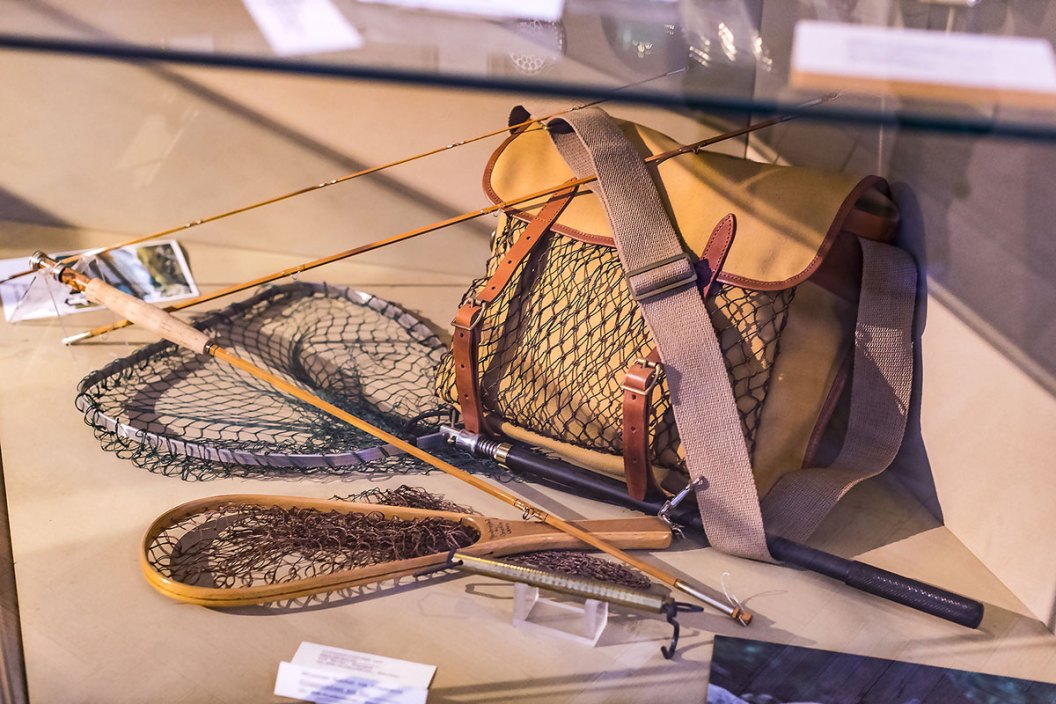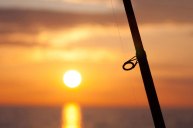So you think you know your fishing history? Read on to find out if it's really true.
We'll just go ahead and say it: people have been fishing ever since they realized that there were fish in the water.
Once they caught the first one, it was most definitely eaten, most definitely delicious, and the rest is history... fishing history, to be exact.
The history of fishing is replete with fun things that most of us know, such as where the biggest largemouth bass was caught and who caught it. But did you know who is attributed to using the rod and line first, or who invented the fishing reel as we know it?
There are so many good, fun pieces of fishing trivia that we can all participate in sharing the angling knowledge, so we'll try to liven things up a bit and see if we can stump you a time or two. All we know is that if we're not getting ready to go fishing or actually fishing, we're probably talking about (or at least thinking about) fishing.
Now we just have to decide how much we really know about fishing.
The Earliest Book About Fishing
Like most of us, you may have thought that the first book about fishing was the esteemed work The Complete Angler by Izaak Walton, written in 1653. But it is actually pre-dated by another volume written in 1496 by Dame Juliana Berners called A Treatyse of Fysshynge wyth an Angle that earns the title as the earliest known writing on sport fishing.
The First Fishing Lines
There may be no way to know for sure what early humans used to dangle some kind of bait in front of a fish, but records show some of the earliest sport fishing lines were made of horsehair, which then gave way to lines made of silk, cotton, and linen.
First Baitcasting Reel
While the principal British reel of the day was called the Nottingham reel, based on the wooden lace bobbin commonly used to store thread, what we now know as the baitcaster was never very well received in Britain. This gave rise in an enterprising Kentucky watchmaker named George Snyder to create one of the first baitcasting reel designs ever seen in 1810.
Around 1896, William Shakespeare, Jr. of Kalamazoo, Michigan devised the level-wind device which bore his signature traveling bracket on the reel that automatically spread the line evenly as it was wound. That's closer to the casting reel we use today.
Fishing Rod Materials
In the beginning, the heavier woods of North America and even western Europe were eventually succeeded by the greener, more supple woods of South America and the West Indies with bamboo fast becoming one of the favored types still being used today.
Here's a list of the most common materials.
First Spinning Reel
This significant tackle development took place in 1905, when English textile magnate Holden Illingworth filed the first patent on the fixed-spool spinning reel.
First Fly Reel
Charles F. Orvis from the United States is credited with inventing the first fully modern fly reel as we know it in 1874.
First Fishing Hooks
According to the BBC, the oldest known fishing hooks that archeologists have ever found were discovered in a cave on the Japanese island of Okinawa. "The pair, dating from about 23,000 years ago, were carved from sea snail shells and found with other ancient relics," says the report.
Many ancient fish hooks were made from mammal and fish bones, sea shells, snail shells, oyster shells, and any other hard objects that could be carved into one. In cultures that were more advanced at the time, bronze, iron, and even copper hooks were used.
Ancient Fishing Lures
Native fishing lures were made from bone or wood. It's said that the Chinese and Egyptians used fishing rods, lines, hooks, and lures as early as 2,000 B.C. In later centuries, bronze, copper, and iron were hammered into the first fishing spoons, and in the 18th century, English tackle shops began selling spinners made of tin.
Freshwater Fishing Records
There are over 1,000 species of freshwater fish in North American waters, and maybe 25-30 that we target the most. The largemouth bass is the most popular with no arguments, but it's worth it to look at some of the other fish records from over the years. Some even stretch back to the 19th century.
Call them game fish or call them sport fish, we don't really care. We just want our rod to bend, some line to strip, and all of the trash talk to begin.
Let's check in with the IGFA to check out 10 of the all-tackle records, so you can stash the info in your back pocket. And just for argument's sake, bookmark this page for when your buddy starts to dispute anything.
Brook Trout - 14 lbs 8 oz in 1915 in the Nipigon River, Ontario, Canada by Dr. J.W. Cook.
Striped Bass - 81 lbs 14 oz in Long Island Sound 2011 by Gregory Myerson.
Bluegill - 4 lbs 12 oz at Ketona Lake, Alabama, USA by T. Hudson in 1950.
Bowfin - 21 lbs 8 oz in South Carolina by Robert Harmon in 1980.
Flathead Catfish - 123 lbs by Ken Paulie at the Elk City Reservoir, Kansas in 1998.
Red Drum - 94 lbs 2 oz in North Carolina by David Deuel in 1984.
Most red drum are targeted in saltwater, but as the TPWD says, "During cold spells large numbers of red drum can be found in tidal creeks and rivers. They can live in fresh water and have been found many miles upriver."
Muskellunge - 67 lbs 8 oz by Cal Johnson in 1949 at Lake Court Oreilles, Wisconsin.
Yellow Perch - 4 lbs 3 oz in New Jersey by Dr. C. Abbott way back in 1865.
Chinook Salmon - 97 lbs 4 oz in the Kenai River, Alaska by Les Anderson in 1985.
Northern Pike - 55 lbs 1 oz in Lake of Grefeern, Germany by Lothar Louis in 1986.
Saltwater Fishing Records
We won't even try to get into how many saltwater fish species there are, or even how many sportfish we target, but we want to see if we can stump you with a few of the saltwater records that you may not know about.
Great Barracuda - 87 lbs 3 oz at Christmas Island, Kiribati in 2012 by Christian Loranger.
Atlantic Blue Marlin - 1,402 lbs 2 oz by Paulo Amorim off of Brazil in 1992.
Warsaw Grouper - 436 lbs 12 oz in the Gulf of Mexico in 1985 by Steve Haeusler.
Spanish Mackerel - 13 lbs by Robert Cranton in North Carolina, 1987.
Haddock - 14 lbs 15 oz by Ms. Heike Neblinger in Norway, 1997.
Atlantic Cod - 103 lbs 10 oz in Norway by Michael Eisele in 2013.
Swordfish - 1,182 lbs by Louis Marron off Chile in 1953.
Bluefin Tuna - 1,496 lbs off Nova Scotia, Canada in 1979 by Ken Fraser.
Tarpon - 286 lbs 9 oz by Max Domecq in 2003 at Rubane, Guinea-Bissau.
Bull Shark - 697 lbs 12 oz off Kenya in 2001 by Ronald de Jager.
The Trivia Never Ends...
Recreational fishing, whether it be saltwater or freshwater angling, has changed a lot since the beginning of the 20th century, and fishermen have done their best to keep up.
From fly fishing to the fishing vessels that we use catching fish has always been our number one priority. The fishing equipment that we use has grown by leaps and bounds over the years as fishing methods have tried to keep up with the times.
The fishing industry as a whole now offers up some of the best in fishing tackle that has ever been made. Long gone are the days of harpoons and fishing nets just to catch dinner, and have been supplanted by the fishing gear that modern fishing aficionados have come to love and trust.
Sea fishing now has a new generation of anglers as saltwater methods continue to grow and anticipate what ocean-going fishermen are looking for in a different experience, and even spearfishing is now synonymous with gatherers of fish everywhere. With our fisheries being ever more pushed to the limit by commercial fishing, anglers the world over need to take to the forefront in an effort to keep sportfishing alive and well, and it has never been more important than it is now.
Looking for a little more or even hot lunch for your hunting blind? Follow my webpage, or on Facebook and YouTube.
NEXT: LOOKING BACK ON THE BUCK THAT WAS KILLED BY A BOTTLE
Featured image:




